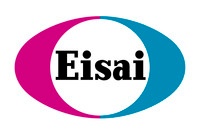January 2, 2020 PR-M01-20-NI-002
OREXIN RECEPTOR ANTAGONIST PROVEN EFFECTIVE FOR BOTH SLEEP ONSET AND SLEEP MAINTENANCE IN CLINICAL DEVELOPMENT PROGRAM OF MORE THAN 2,000 PATIENTS
Eisai Co., Ltd. (Headquarters: Tokyo, CEO: Haruo Naito, “Eisai”) today announced that the U.S. Food and Drug Administration (FDA) approved the new drug application for its in-house discovered and developed orexin receptor antagonist DAYVIGOTM (lemborexant). DAYVIGO was approved for the treatment of insomnia characterized by difficulties with sleep onset and/or sleep maintenance in adults1. In the United States, DAYVIGO will be commercially available in 5 mg and 10 mg tablets following scheduling by the U.S. Drug Enforcement Administration (DEA), which is expected to occur within 90 days.
The mechanism of action of lemborexant in the treatment of insomnia characterized by difficulties with sleep onset and/or sleep maintenance is presumed to be through antagonism of orexin receptors. The orexin neuropeptide signaling system plays a role in wakefulness. Blocking the binding of wake-promoting neuropeptides orexin A and orexin B to orexin receptors OX1R and OX2R is thought to suppress wake drive. Lemborexant binds to orexin receptors OX1R and OX2R and acts as a competitive antagonist with stronger inhibition effect to OX2R*.
The approval was based on the results of a clinical development program that included two pivotal Phase III studies (SUNRISE 2 and SUNRISE 1), which evaluated DAYVIGO versus comparators for up to one month and DAYVIGO versus placebo for six-months, respectively, in a total of about 2,000 adult patients with insomnia. From these studies results, DAYVIGO demonstrated statistically significant superiorities on sleep onset and sleep maintenance compared to placebo in both subjective and objective evaluations.
Across SUNRISE 2 and SUNRISE 1, DAYVIGO was not associated with rebound insomnia following treatment discontinuation, and there was no evidence of withdrawal effects following DAYVIGO discontinuation at either dose. In addition, the development program included multiple safety studies evaluating effects on postural stability, cognition, driving performance and respiratory safety.
The most common adverse reaction (reported in 5% or more of patients treated with DAYVIGO and at least twice the rate of placebo) in SUNRISE 2 (the first 30 days) and SUNRISE 1 was somnolence (DAYVIGO 10 mg, 10%; DAYVIGO 5 mg, 7%; placebo, 1%).
In addition to these pivotal trials, Eisai conducted a number of studies to further evaluate the safety of DAYVIGO, including a study that assessed the effect of DAYVIGO on postural stability and cognitive performance and a next-morning driving study.
“Insomnia disorder is a chronic condition that has a variety of potential negative impacts and long-term consequences for health and well-being,”2 said Russell Rosenberg, PhD, D.ABSM, a principal investigator in the DAYVIGO clinical studies and former Chairman of the Board of the National Sleep Foundation. “The clinical trials provide evidence that DAYVIGO may improve patients’ ability to fall asleep and stay asleep.”
“We believe the approval of DAYVIGO is particularly exciting because it is the first FDA-approved medication to report safety data over a 12-month period along with sleep onset and sleep maintenance efficacy data over a six-month period in a pivotal clinical study,” said Lynn Kramer, MD, Chief Clinical Officer, Neurology Business Group, Eisai. “We look forward to making this new therapeutic option available to the millions of patients who suffer with insomnia.
Eisai has submitted new drug applications seeking approval of this agent for use in the treatment of insomnia in Japan (March 2019) and Canada (August 2019).
Insomnia is characterized by difficulty falling asleep, staying asleep, or both, despite an adequate opportunity to sleep, that can lead to daytime consequences such as fatigue, difficulty concentrating and irritability.2,9 Insomnia is one of the most common sleep-wake disorders with high prevalence. Approximately 30% of adults worldwide have symptoms of insomnia,7,8 and many of them remain months to years. As a result, insomnia causes various social losses such as long absences and reduced productivity.
With DAYVIGO and through its research and development efforts focusing on orexin biology, Eisai aspires to improve the lives of patients suffering from sleep disorders.
*Lemborexant binds to orexin receptors, OX1R and OX2R and acts as a competitive antagonist (IC50 values of 6.1 nM and
2.6 nM, respectively). When activated, the role of OX1R is to suppress REM sleep, and the role of OX2R is to suppress
both non-REM sleep and REM sleep. Lemborexant enables sleep by preventing activation of OX1R and OX2R.
**DSM-5: Diagnostic and Statistical Manual of Mental Disorders, Fifth Edition (American Psychiatric Association)
Media Inquiries:
Public Relations Department,
Eisai Co., Ltd.
+81-(0)3-3817-5120

Nice Insight, established in 2010, is the research division of That’s Nice, A Science Agency, providing data and analysis from proprietary annual surveys, custom primary qualitative and quantitative research as well as extensive secondary research. Current annual surveys include The Nice Insight Contract Development & Manufacturing (CDMO/CMO), Survey The Nice Insight Contract Research - Preclinical and Clinical (CRO) Survey, The Nice Insight Pharmaceutical Equipment Survey, and The Nice Insight Pharmaceutical Excipients Survey.

We give first thoughts to patients and their families. We strive to increase the benefits that healthcare provides them and we conduct our business to meet their diversified healthcare needs worldwide. As a human health care ("hhc") company, we develop and provide products and services that contribute to the well-being of patients and their families under any healthcare system.